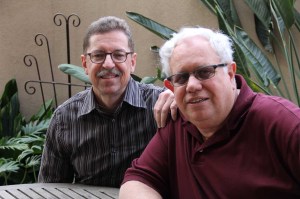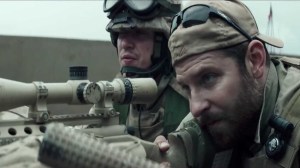
Director Clint Eastwood is known for loyalty, so his key crew collaborators have worked with him for years. Dialog and music, re-recording mixer John Reitz started with Eastwood in 1979 on Escape from Alcatraz. Effects mixer Gregg Rudloff joined the team a couple of films later.
To bring gritty audio realism to Eastwood’s American Sniper, the Oscar-winning duo based their mix on clarity and dynamics, the style of mixing that they prefer. The film was mixed using Dolby Atmos. Working in the immersive sound system requires forethought on how it is used, but allows more flexibility in creating the soundscape, including point-sourcing the material.
“It’s a creative process. You hear a lot about the objects. You can have up to 64 speakers in your theater with Atmos, and those are considered objects, but I think one of the greatest benefits is just on the basic mix,” opined Rudloff. “You get full-range surrounds. And what we mean is, full frequency. They have a bass enhancement system. Right off the bat, if you just take your traditional mix and play it through the Atmos process, you’ve instantly boosted the frequency response throughout the theater.”

“It’s the clarity for me,” Reitz added. The system opens up the mix, because there is a separation of sounds that before were sharing space in the room. “There is more of a spread with the music,” explained Rudloff. “It wraps around the sides, a bit. Clarity is where it’s at. We call it ‘opening up the mix.’”
The mixers like working with the immersive system and how it helps dialogue and music “just by cracking the plane of the screen,” but they are careful to not overuse the tool, so it does not become a distraction.
“John and I are believers that the story is on the screen,” explained Rudloff. “You want to use the room – they call it an immersive system – but you still want to be cautious that you don’t pull the audience out of the movie by doing something that’s distracting to the story.”
On mixing a war film, Rudloff admitted, “There’s always a challenge of level. Fortunately Clint isn’t one to believe louder is better. Some filmmakers think it adds excitement. The way to beat that game is to use dynamics. It’s the relationship of the soft moments to the loud moments. It’s the change in dynamics that can make something seem loud without having to be assaultive to the audience.”
Before American Sniper, Reitz and Rudloff had mixed the war films Flags of Our Fathers and Letters from Iro Jima for Eastwood. According to Rudloff, “Clint is a believer that during a combat scene in a war film, you don’t necessarily need to hear all the dialog because in reality, you wouldn’t be hearing the dialog.” A sense of realism was a key goal of the sound mix.
Reitz commented, “Unless it’s a story point, he doesn’t care if it gets buried or not.”
A lot of discussion was carried on between the mixers themselves, and with the filmmakers, about dialog that is not necessarily intelligible to the audience. Even if the lines were not important, the filmmakers needed to make sure the audience understood the lines were not important otherwise they might be afraid they missed something. “And then what happens? You turn in your seat and you say, ‘What did they say?’ And you’ve just missed the next line of dialog,” noted Rudloff.
Eastwood made a conscious choice to not have much music in the film. Adding score would take away that gritty realism he desired. Compared to combat units that go into battle together, a sniper’s role in war is very solidary, very intimate. “There is an innate stillness and quietness about snipers. We wanted this film to have a certain amount of intimacy within the soundtrack. Having a big sweeping score, would take away from that. It also takes away from the realism of the situations that Chris Kyle was in.”





